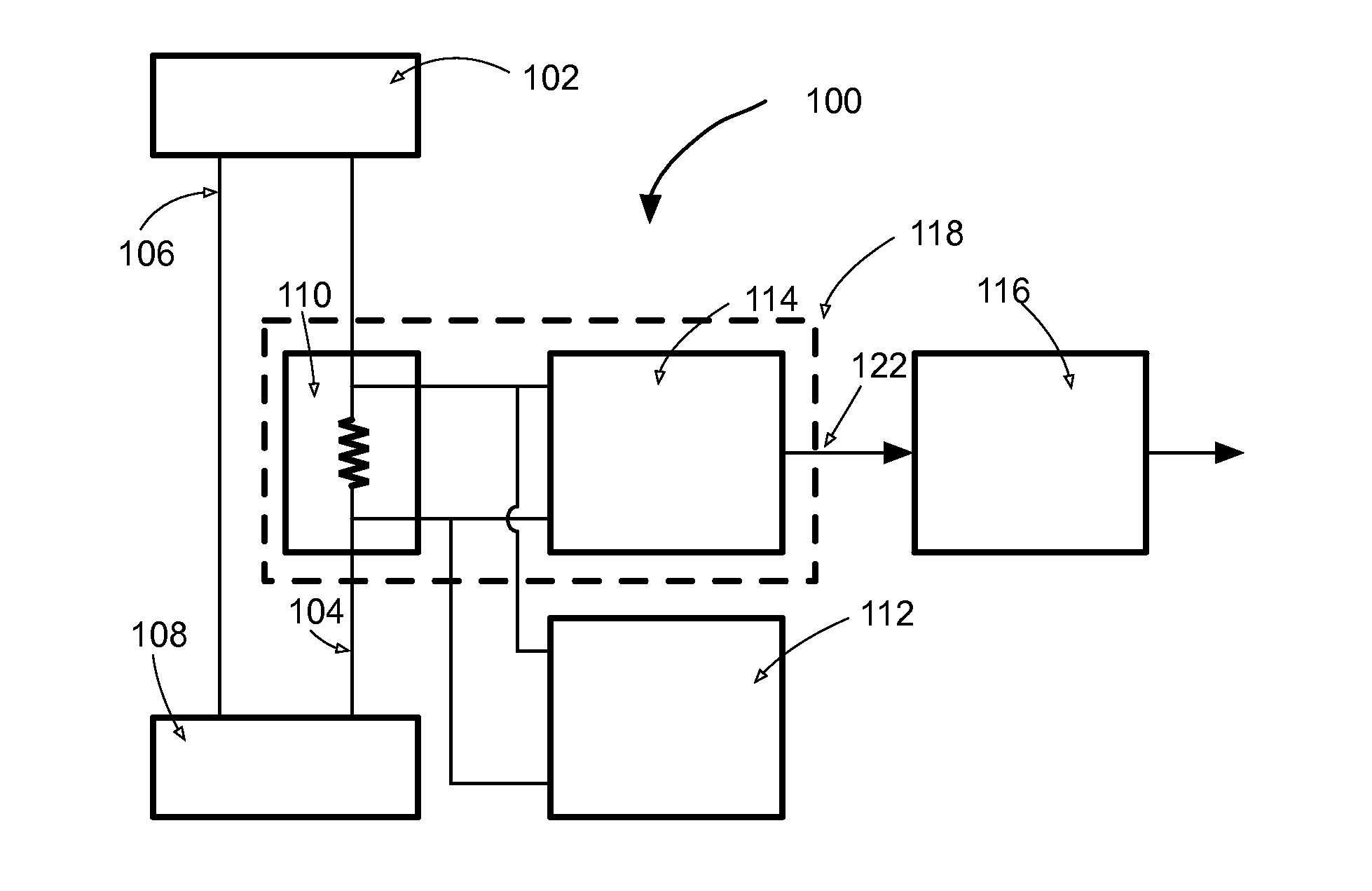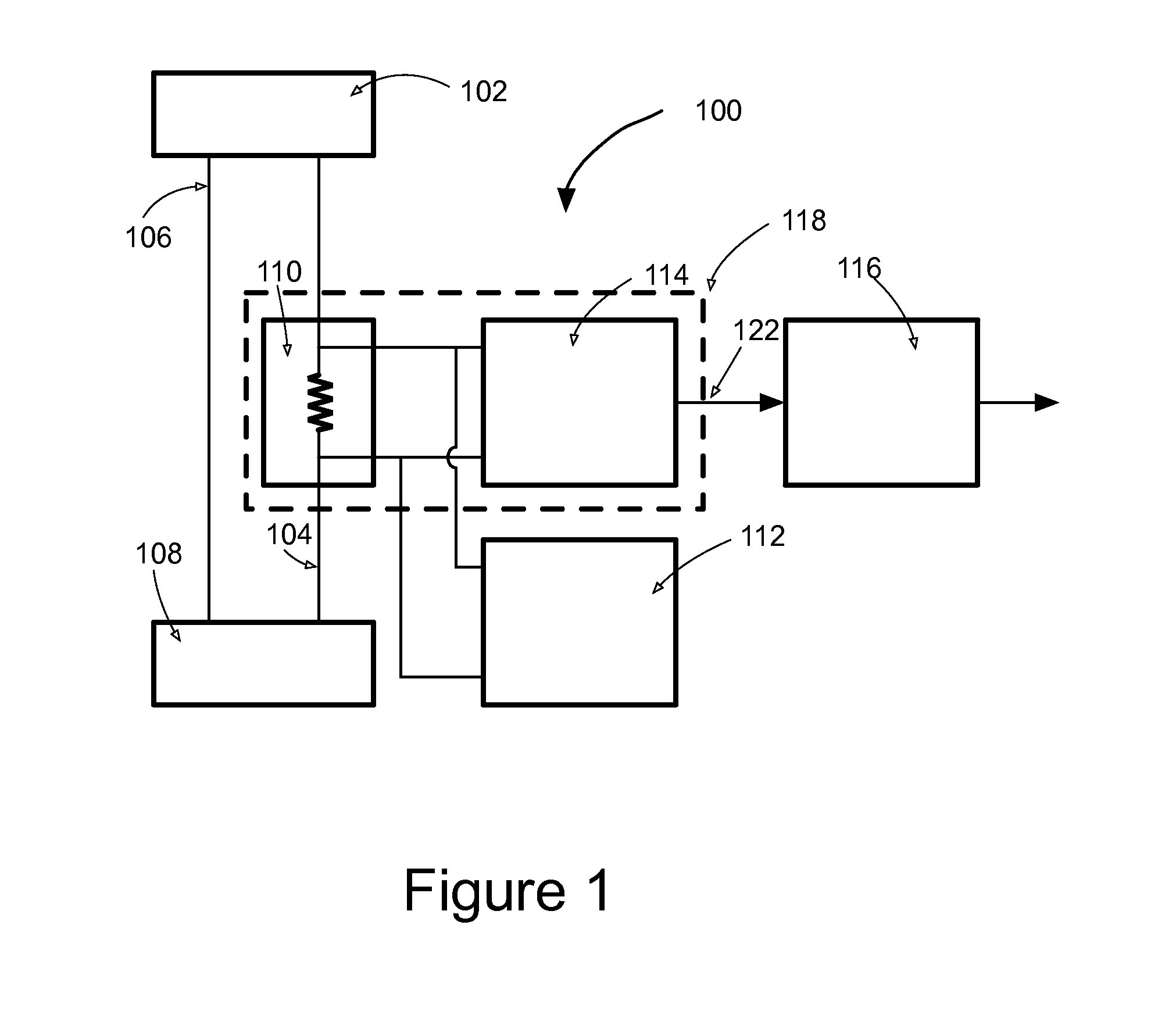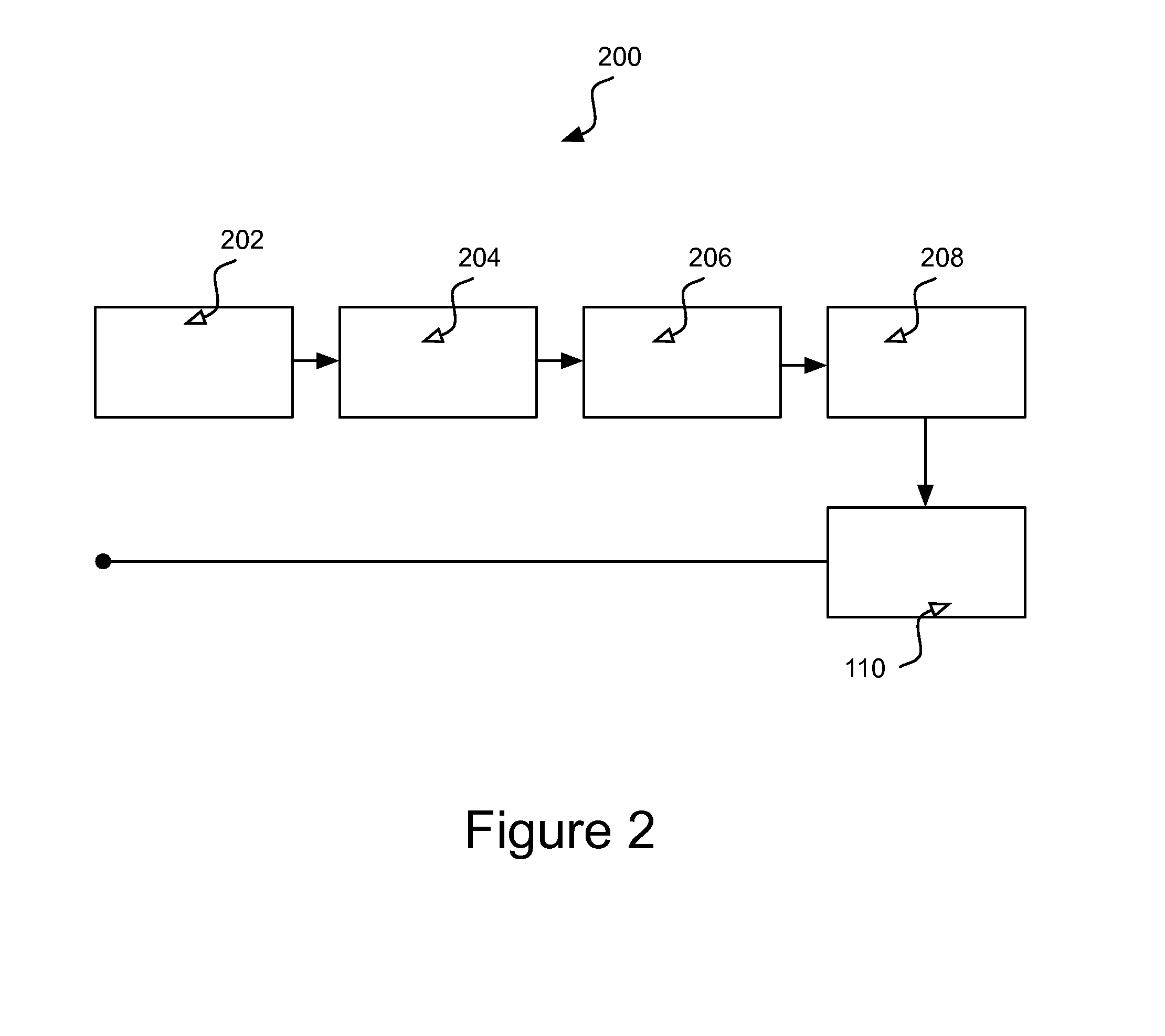Current measurement
a current measurement and current sensor technology, applied in the direction of measuring devices, moving-iron instruments, instruments, etc., can solve the problems of non-linearity and temperature drift of hall current probes, loss of measurement accuracy in shunting ordinary temperature coefficient of resistance, and lack of reliance on the known precision of current sensors
- Summary
- Abstract
- Description
- Claims
- Application Information
AI Technical Summary
Benefits of technology
Problems solved by technology
Method used
Image
Examples
first embodiment
[0053]A circuit diagram of the current multiplier is shown in FIG. 3A. The current multiplier 300 of FIG. 3A comprises a first resistor 302 in series between a multiplier input current node 304 and an output node 306. The circuit path between the multiplier input current node 304 and the output node 306 constitutes a first current path. The current multiplier 300 further comprises a n-FET 308 in series with a second resistor 310. The drain of the n-FET is connected to a positive supply and the source of the n-FET is connected to a first end of the second resistor 310. The second opposite end of the second resistor 310 is connected to the output node 306. The circuit path between the positive supply and the output node constitutes a second path. The current multiplier 300 yet further comprises an operational amplifier 312 which is connected at its non-inverting input to the multiplier input current node 304 and at its inverting input to the first end of the second resistor 310. The o...
second embodiment
[0056]A circuit diagram of the current multiplier 400 is shown in FIG. 3B. Components in common with the embodiment of FIG. 3A are designated by like reference numerals and the reader's attention is directed to the description provided above with reference to FIG. 3A for a description of such common components. Instead of the n-FET 308 of FIG. 3A the current multiplier 400 of FIG. 3B comprises an inductor 402 in series with the second resistor 310. An end of the inductor 310 opposite the end connected to the second resistor is connected to a first switch 404 to the positive power supply, which supplies the signal source, and to a second switch 406 to the negative power supply. It can thus be appreciated that the current multiplier 400 of FIG. 3B dispenses with the DC-DC converter 314 of FIG. 3A. The current multiplier 400 further comprises a Pulse Width Modulation (PWM) generator 408 which is driven by the output from the operational amplifier 312 and a filter 410 connected between ...
PUM
 Login to View More
Login to View More Abstract
Description
Claims
Application Information
 Login to View More
Login to View More - R&D
- Intellectual Property
- Life Sciences
- Materials
- Tech Scout
- Unparalleled Data Quality
- Higher Quality Content
- 60% Fewer Hallucinations
Browse by: Latest US Patents, China's latest patents, Technical Efficacy Thesaurus, Application Domain, Technology Topic, Popular Technical Reports.
© 2025 PatSnap. All rights reserved.Legal|Privacy policy|Modern Slavery Act Transparency Statement|Sitemap|About US| Contact US: help@patsnap.com



